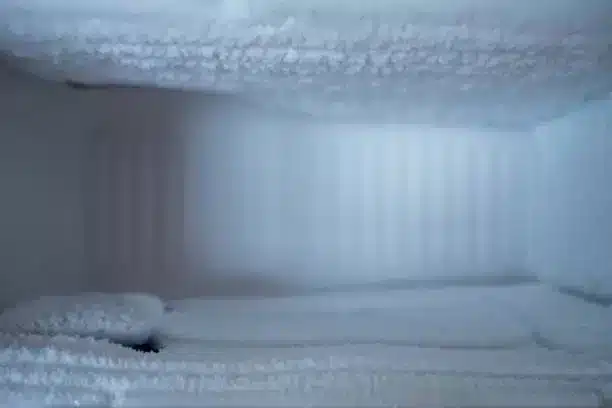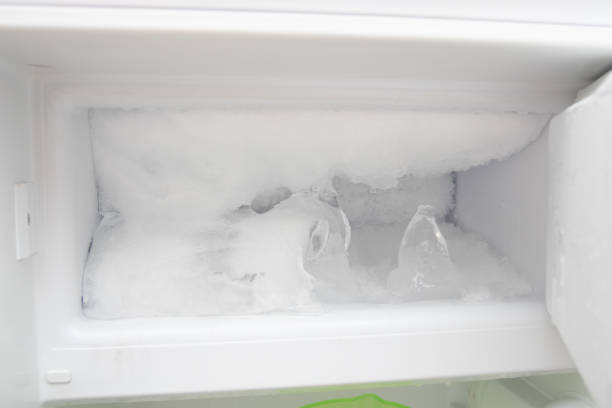
Ice shrinkage happens in the freezer because of sublimation, which is when ice turns into water vapor without melting. This occurs when the air in the freezer is dry and has a low vapor pressure, which creates a gradient that draws the water molecules from the ice into the air.
Sublimation is a change of phase that occurs when a solid substance, such as ice, turns into a gas, such as water vapor, without passing through the liquid phase, such as water. This happens when the temperature and pressure conditions are such that the solid substance can directly overcome its intermolecular forces and escape into the gas phase.
For ice to sublimate, it needs to have enough energy to break free from its crystalline structure and become a gas. This energy can come from heat or from a low vapor pressure. Heat is the transfer of thermal energy from a warmer object to a colder one. Vapor pressure is the pressure exerted by a gas on its surroundings. When the vapor pressure of a substance is lower than the atmospheric pressure, it means that there is more space for the gas molecules to spread out and escape.
In your freezer, both heat and vapor pressure can cause ice to sublimate. The freezer is not perfectly insulated, so some heat can enter from the outside and warm up the air inside. The air inside the freezer is also dry and has a low humidity, which means that it has a low vapor pressure. The air in your freezer can have a vapor pressure as low as 0.1 kPa, while ice at -10°C has a vapor pressure of 0.26 kPa.
This creates a gradient that draws the water molecules from the ice into the air. The water molecules on the surface of the ice gain enough energy to overcome their intermolecular forces and escape into the gas phase. This process repeats until all the ice is gone or until the vapor pressure of the air and ice are equal.
Ice shrinkage can be annoying and wasteful, especially if you need ice for your drinks or projects. It can also affect the quality and safety of your food, as it can cause freezer burn or dehydration. Fortunately, there are some ways to prevent or reduce ice shrinkage in your freezer. Here are some tips:

Ice shrinkage in the freezer is not a mystery or a magic trick, but a scientific phenomenon that involves sublimation. Sublimation is the direct transition of a solid substance, such as ice, into a gas, such as water vapor, without passing through the liquid phase, such as water. This happens when the air in the freezer is dry and has a low vapor pressure, which creates a gradient that draws the water molecules from the ice into the air.
You can prevent or reduce ice shrinkage in your freezer by following some simple tips and tricks, such as using an ice maker or an ice tray with a lid, using distilled or purified water, filling up your freezer, checking and adjusting your thermostat, and avoiding opening and closing your freezer door too often or for too long.
